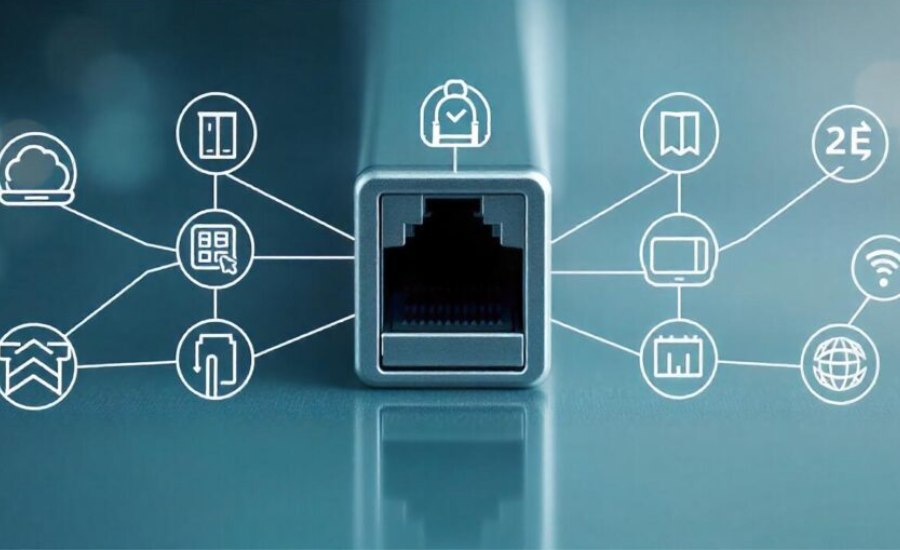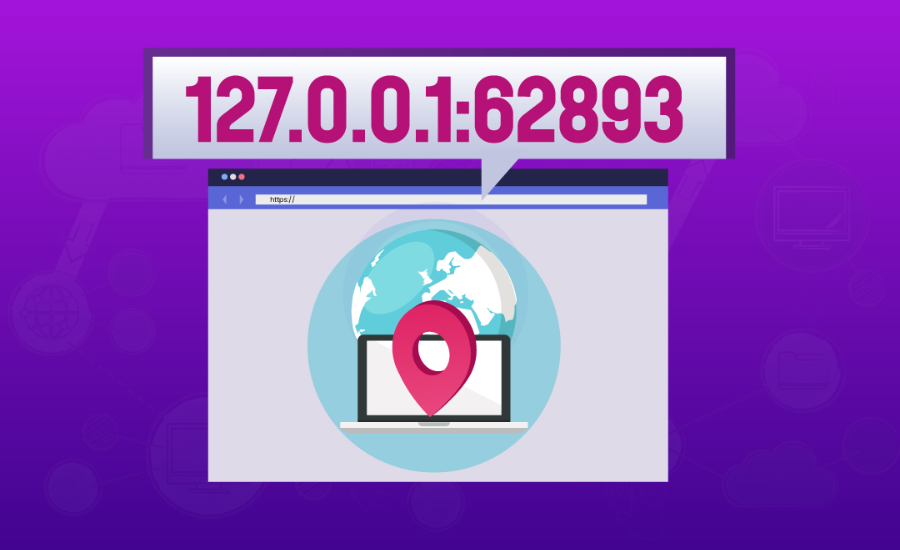In the ever-evolving landscape of networking and software development, certain technical identifiers hold immense importance, and 127.0.0.1:62893 is one such example. While it may initially appear as a random combination of numbers, this address-port pairing is a vital tool for developers, system administrators, and IT professionals. Whether you are troubleshooting a system error, conducting local testing for an application, or simulating server environments, understanding the nuances of 127.0.0.1:62893 can dramatically enhance your capabilities and efficiency.
This guide provides an in-depth exploration of the components, significance, applications, and best practices associated with 127.0.0.1:62893. By the end, both beginners and seasoned professionals will have a comprehensive understanding of this technical resource.
Breaking Down 127.0.0.1:62893

1. The Meaning Behind 127.0.0.1
At its core, 127.0.0.1 is a reserved IP address known as the “localhost.” It serves as the backbone of internal networking, enabling a computer to communicate with itself. Unlike standard IP addresses that facilitate communication between devices over a network, 127.0.0.1 confines all traffic to the originating machine. This makes it an essential tool for tasks such as software testing, debugging, and isolating processes from external influences.
The concept of localhost is deeply ingrained in modern computing, providing a secure and efficient mechanism for internal data exchange. By avoiding external networks, localhost ensures that data transfers are faster, more private, and unaffected by external variables such as internet connectivity or third-party interference.
2. The Role of Port 62893
The port number 62893 complements 127.0.0.1 by acting as a logical gateway for internal communication. Ports are numeric identifiers assigned to specific processes or services running on a device. They enable applications to send and receive data independently of one another, ensuring that resources are allocated efficiently.
Port 62893, like any other port, is used to direct traffic to a specific application or service within the localhost environment. When paired with 127.0.0.1, this configuration creates a localized endpoint that developers and administrators can leverage for a variety of purposes, including testing APIs, simulating server environments, and diagnosing network configurations.
The Importance of 127.0.0.1:62893 in Modern Computing
The combination of 127.0.0.1 and a designated port number like 62893 is more than just a technical identifier—it’s a cornerstone of secure, efficient, and controlled computing. Here are some key benefits:
- Privacy Protection
- All traffic directed to 127.0.0.1 stays confined within the local machine, eliminating the risk of data exposure to external networks or devices.
- Enhanced Testing Efficiency
- By avoiding the delays and vulnerabilities associated with external connections, localhost enables developers to test applications more quickly and securely.
- Error Isolation
- Troubleshooting becomes significantly easier when traffic is restricted to localhost, as external variables are eliminated from the equation.
- Resource Optimization
- Localhost-based communication reduces dependency on external resources, conserving bandwidth and computational power.
How 127.0.0.1:62893 Works?

The operation of 127.0.0.1:62893 is based on the fundamentals of networking protocols such as TCP (Transmission Control Protocol) and UDP (User Datagram Protocol). These protocols define how data is transmitted over a network, ensuring reliability and speed. Here’s a simplified explanation of how 127.0.0.1:62893 functions:
- Request Initiation
- An application sends a request to 127.0.0.1:62893 as the target address and port.
- Data Encapsulation
- The networking layers encapsulate the data, adding headers that include source and destination details.
- Data Loopback
- Instead of being sent out over the network, the data is looped back to the originating machine, where the operating system processes it and generates a response.
This closed-loop mechanism ensures that all data transfers remain internal, offering unparalleled speed, security, and reliability.
Applications of 127.0.0.1:62893
1. Local Development and Testing
For developers, 127.0.0.1:62893 is an indispensable tool. It allows them to:
- Host local servers to preview and refine web applications.
- Debug software applications in a controlled environment.
- Test APIs and database queries without affecting live systems.
2. Network Diagnostics
IT professionals use localhost and specific ports like 62893 to identify and resolve connectivity issues. For example, testing 127.0.0.1:62893 can help determine whether a problem lies within the local system or an external network.
3. Performance Monitoring
System administrators can route application traffic through localhost to monitor performance, track resource usage, and identify bottlenecks.
Common Issues and Solutions
Despite its utility, using 127.0.0.1:62893 can sometimes present challenges. Here are some common issues and how to address them:
1. Port Conflicts
When multiple applications attempt to use the same port, a conflict arises, leading to errors.
Solution:
- Use tools like netstat (Windows) or lsof (Linux/macOS) to identify the process occupying the port.
- Assign a different port to one of the conflicting applications.
2. Firewall Restrictions
Firewalls may block localhost traffic as a security precaution, disrupting communication.
Solution:
- Update firewall settings to allow loopback traffic on port 62893.
- Add exceptions for trusted applications.
3. Configuration Errors
Misconfigured software may fail to recognize 127.0.0.1:62893 as a valid endpoint.
Solution:
- Double-check application settings and ensure proper configuration.
- Test connectivity using tools like ping or telnet.
Security Considerations

While localhost traffic is generally secure, improper management of ports like 62893 can lead to vulnerabilities. Here are some best practices to follow:
- Restrict Access
- Ensure that only authorized applications can access 127.0.0.1:62893.
- Monitor Logs
- Regularly review system logs for unusual activity or unauthorized access attempts.
- Apply Updates
- Keep your operating system and software up to date to address potential security flaws.
Advanced Use Cases: 127.0.0.1:62893 in Cloud Computing
In cloud environments, 127.0.0.1 retains its importance, enabling developers to replicate localhost setups within virtual machines. Platforms like AWS, Azure, and Google Cloud allow users to test applications in isolated environments, mirroring the functionality of localhost. This approach streamlines development workflows while maintaining security and efficiency.
Configuring 127.0.0.1:62893 for Your Needs
On Windows
- Open the Command Prompt with administrative privileges.
- Use the netsh command to assign or modify port settings.
On macOS/Linux
- Edit the /etc/hosts file to define localhost behavior.
- Use tools like iptables to manage port rules and configurations.
Key Facts
- 127.0.0.1
- It is a reserved IP address known as “localhost,” allowing a computer to communicate with itself.
- Traffic on 127.0.0.1 is confined to the local machine, ensuring speed, privacy, and security.
- Port 62893
- A port is a numeric identifier for a specific process or service on a machine.
- Port 62893 enables internal communication for applications or services running on the localhost.
- Applications of 127.0.0.1:62893
- Local Development: Testing APIs, hosting local servers, and debugging software in isolation.
- Network Diagnostics: Identifying whether issues are local or external.
- Performance Monitoring: Tracking application performance and resource usage.
- Common Issues and Solutions:
- Port Conflicts: Use tools like netstat (Windows) or lsof (Linux/macOS) to resolve conflicts.
- Firewall Restrictions: Update firewall settings to allow localhost traffic.
- Configuration Errors: Verify settings and test connectivity with tools like ping or telnet.
- Security Best Practices:
- Restrict access to specific applications.
- Monitor logs for unusual activity.
- Keep software and systems updated to address vulnerabilities.
- Advanced Use Cases:
- Cloud platforms like AWS and Azure replicate localhost environments for isolated testing within virtual machines.
- Operating System Configurations:
- Windows: Use the netsh command to modify port settings.
- Linux/macOS: Use the /etc/hosts file or tools like iptables for port and localhost management.
FAQs
Q: What is 127.0.0.1?
A: 127.0.0.1 is the localhost IP address that allows a computer to communicate with itself for testing and debugging purposes.
Q: Why is localhost traffic more secure?
A: Localhost traffic does not leave the machine, ensuring privacy and avoiding exposure to external networks or devices.
Q: What is the function of port 62893?
A: Port 62893 acts as a logical gateway for specific applications or processes, facilitating internal communication within the localhost.
Q: What tools can help resolve port conflicts?
A: Tools like netstat (Windows) or lsof (Linux/macOS) help identify processes using conflicting ports.
Q: Can 127.0.0.1:62893 be used in cloud environments?
A: Yes, localhost functionality can be replicated in cloud virtual machines for secure and isolated development workflows.
Q: What are the risks of using 127.0.0.1:62893?
A: Improper port management can lead to vulnerabilities. Restrict access, monitor logs, and apply updates to mitigate risks.
Q: How do developers use 127.0.0.1 for testing?
A: Developers use it to host local servers, test APIs, debug code, and isolate applications from external environments.
Q: What networking protocols does 127.0.0.1:62893 rely on?
A: It relies on TCP (Transmission Control Protocol) or UDP (User Datagram Protocol) for data transfer within the local system.
Related: 1555-Portrait
Conclusion
The address-port combination 127.0.0.1:62893 is much more than a technical identifier—it’s a powerful tool for optimizing development, ensuring secure communication, and diagnosing network configurations. By mastering its applications, functions, and best practices, you can elevate your capabilities as a developer or IT professional.
Whether you’re building a web application, troubleshooting a system issue, or fine-tuning performance metrics, the strategic use of 127.0.0.1:62893 can empower you to achieve greater efficiency, security, and precision in your work.
Remain connected to this: Magazine Released
